Rammed Earthenware by Bril
These plates made of tightly-packed soil were produced by Japanese design collective Bril (+ slideshow).
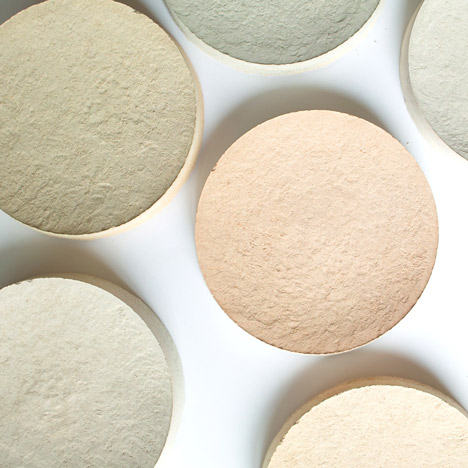
Each plate in the Rammed Earthenware collection by Bril is made from a combination of soil in various colours, sand, lime and water.
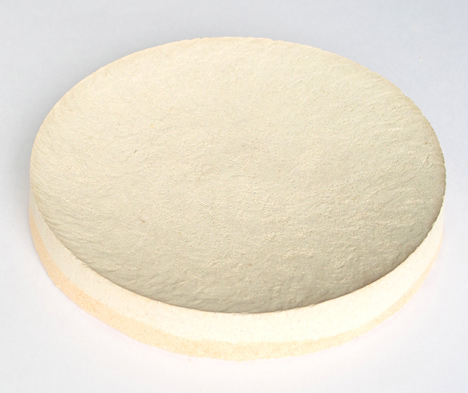
The mixture is poured into a mould and rammed with three wooden sticks, each with a different shaped tip, until it becomes hard. "The top surface has the marks of being rammed and looks like lunar craters," explain the designers.
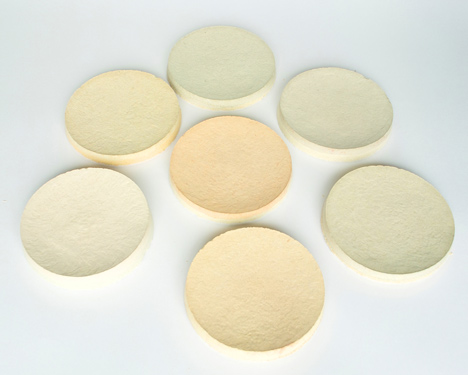
The plates are then taken out of the mould and left to dry for a few weeks.
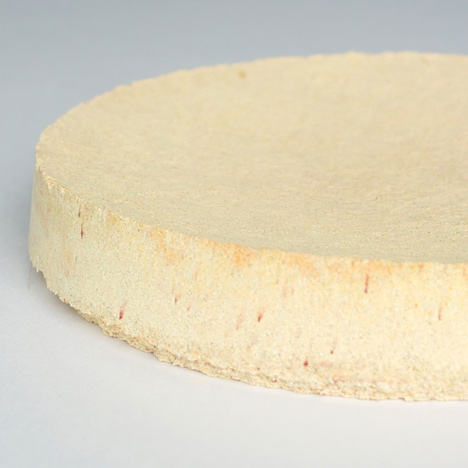
The plates have been produced as part of a series of pieces made from soil using architectural techniques.
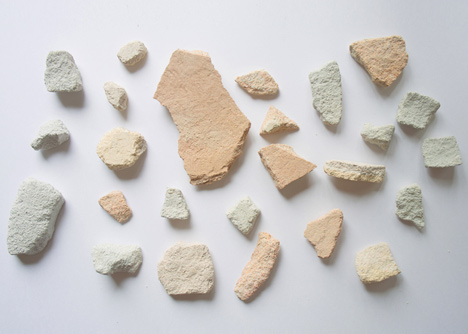
Bril is a collective formed by designers Tatsuro Kuroda, Jo Nakamura and Fumiaki Goto, who all graduated from Design Academy Eindhoven in 2011.

We previously featured a set of ceramic vessels designed by Goto with pointed graphite bottoms to be used like a pencil.
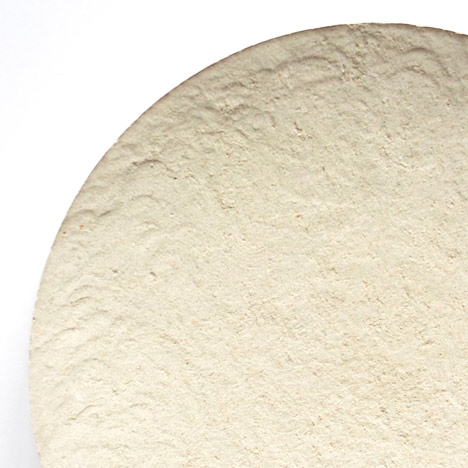
We've also featured a collection of vessels made from radioactive Japanese soil and a "brick replacement service" which made bricks from soil and seeds.
See all our stories about plates »
See all our stories about homeware »
Here's some more information from the designers:
Bril
Rammed Earthenware
Cutting, casting, bending, polishing, stamping, shaving, lathing and so on. Many and various techniques of processing have been generated and they are still developing. "Ramming' is one of the most primitive techniques through history. We focused on the technique and tried to combine such a primitive technique and a primitive material.
"Rammed earth" is one of the most primitive techniques to build walls. The way is just to ram the mixture of soil strongly. So this simple technique has been used around the world since long time ago though the details were different.
The aim of this project is to apply this primitive technique into making products. Though architecture needs the strength to be stable, living products don't do it so much and have their own possibilities of design.
Rammed Earthenware is the one made with ramming the mixture of several colours of soil, sand, lime and a bit of water. At first, the mixture is filled in a mold and is roughly pushed by fingers. Secondly it is strongly rammed by three kinds of wooden sticks whose tips are different for a half hour. It gradually gets hard and the sound of ramming it becomes dry and high. After a half day, it comes off from the mold and is dried for a few weeks.
The top surface has the marks of being rammed and looks like lunar craters. Since the lime inside has the feature to absorb carbon dioxide in the air and turn back into limestone, it gets harder and becomes limestone made out of soil after a period. The soil of this project is from several places in Japan. Its color is not the one of pigment but the one of itself.